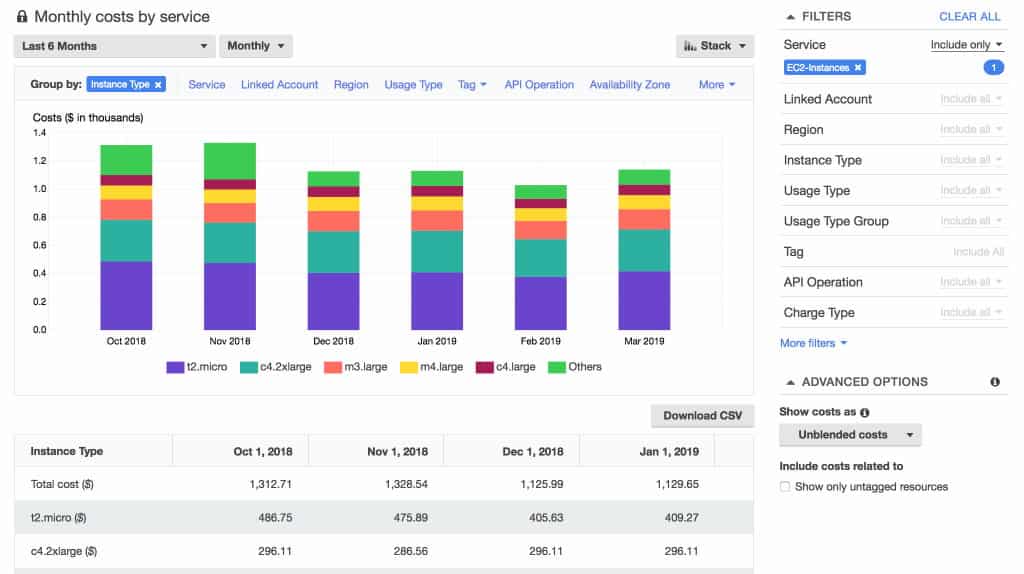Maximizing Cost Efficiency in AWS using Cost Allocation Tags

Are you looking to maximize cost efficiency in Amazon Web Services (AWS)? Look no further! In this guide, we will explore the power of cost allocation tags and how they can help you optimize your AWS spending. With cost allocation tags, you can easily allocate costs to different teams, projects, or departments within your organization, providing you with clear visibility into your AWS expenses. By using these tags effectively, you can identify areas of overspending and find opportunities for cost savings.
Get ready to take control of your AWS spending and optimize your resources like never before. Let’s dive in!
Table of Contents
Understanding Cost Allocation Tags and Their Importance
Cost allocation tags are a powerful tool in AWS that allows you to categorize your resources and track their costs. These tags act as metadata labels that you can assign to your AWS resources, such as instances, volumes, and databases. By assigning tags to your resources, you can gain granular insights into your AWS spending and easily identify the cost drivers.
One of the key benefits of cost allocation tags is that they provide you with the ability to allocate costs to different teams, projects, or departments within your organization. This enables you to track and analyze spending at a more detailed level, helping you make informed decisions about resource allocation and budgeting.
To effectively utilize tags, it is important to have a clear understanding of your organization’s cost structure. By identifying the key cost centers and mapping them to appropriate tags, you can gain a holistic view of your AWS spending. This visibility allows you to identify areas of overspending, optimize resource allocation, and ultimately reduce costs.
Benefits of Using Cost Allocation Tags in AWS
Implementing cost allocation tags in AWS offers a wide range of benefits for businesses of all sizes. Let’s take a look at some of the key advantages:
Granular Cost Visibility
Tags provide you with the ability to track and analyze costs at a detailed level. By assigning tags to your resources, you can easily identify the cost drivers and allocate costs to different teams or projects.
Resource Optimization
With clear visibility into your AWS expenses, you can identify areas of overspending and optimize your resource allocation. By understanding which resources are driving up costs, you can make informed decisions about resource usage and eliminate unnecessary expenses.
Budget Allocation
Tags enable you to allocate costs to different budgets or departments within your organization. This allows you to accurately track spending against budgets and ensure that resources are being utilized efficiently.
Cost Reporting
By using tags, you can generate detailed cost reports that provide insights into spending patterns and trends. These reports can be used to identify cost-saving opportunities and make data-driven decisions.
These are just a few of the many benefits that cost allocation tags offer in AWS. By implementing these tags effectively, you can take control of your AWS spending and maximize cost efficiency.
Best Practices for Implementing Cost Allocation Tags in AWS
Implementing cost allocation tags in AWS requires careful planning and consideration. To ensure that you get the most out of these tags, here are some best practices to follow:
- Standardize Tagging: Establish a standard naming convention for your cost allocation tags. This will help ensure consistency and ease of management across your organization. Consider using tags such as “team,” “project,” or “department” to categorize your resources effectively.
- Tag Resources from the Beginning: It’s best to assign tags to your resources from the moment they are created. This ensures that all resources are properly categorized and cost allocation is accurate from the beginning.
- Regularly Review and Update Tags: As your organization evolves, it’s important to regularly review and update your tags. This will help you adapt to changes in resource ownership, project structures, or departmental budgets.
- Train Your Team: Educate your team members on the importance of tags and how to use them effectively. By ensuring that everyone understands the tagging process, you can maintain consistency and accuracy in your cost allocation.
By following these best practices, you can establish a solid foundation for cost allocation tags in your AWS environment and maximize their benefits.
How to Create and Manage Cost Allocation Tags in AWS
Creating and managing cost allocation tags in AWS is a straightforward process. Let’s walk through the steps:
1. Creating Cost Allocation Tags
To create tags, you can use the AWS Management Console, AWS CLI, or AWS SDKs. Simply select the resource you want to tag, choose the desired tag key and value, and apply the tag. You can also create tags in bulk by using the AWS Cost Explorer API.
2. Managing Cost Allocation Tags
Once you have created your tags, you can easily manage them through the AWS Management Console. From the console, you can view, edit, or delete tags as needed. You can also use the AWS CLI or SDKs for more advanced management tasks.
It’s important to note that cost allocation tags are not retroactive. This means that if you apply tags to existing resources, the costs incurred prior to tagging will not be allocated. To ensure accurate cost allocation, it’s best to tag resources from the moment they are created.
Using Cost Allocation Tags to Track and Analyze Costs
Cost allocation tags provide you with a powerful tool for tracking and analyzing costs in AWS. By assigning tags to your resources, you can easily filter and group costs based on specific criteria. This allows you to gain insights into spending patterns, identify cost drivers, and make data-driven decisions.
To track and analyze costs using tags, you can leverage the AWS Cost Explorer. This tool provides you with a comprehensive view of your AWS spending and allows you to generate detailed reports based on your tags. You can filter the reports by tags to drill down into specific cost centres and analyze spending trends.

By regularly monitoring your tags and analyzing the associated costs, you can identify areas of overspending and take corrective actions. For example, if you notice that a particular team or project is consistently driving up costs, you can investigate further and make adjustments to optimize resource usage.
Tools and Resources for Maximizing Cost Efficiency in AWS
AWS provides a range of tools and resources to help you maximize cost efficiency. Here are some key resources to explore:
AWS Cost Explorer
The AWS Cost Explorer is a powerful tool that allows you to visualize, understand, and manage your AWS costs. It provides you with detailed reports, cost forecasts, and budgeting capabilities.
AWS Budgets
AWS Budgets enables you to set custom cost and usage budgets for your AWS resources. You can use cost allocation tags to create budgets based on specific criteria, such as teams, projects, or departments.
AWS Trusted Advisor
AWS Trusted Advisor provides you with real-time guidance to help you optimize your AWS resources. It offers recommendations for cost optimization, performance improvement, security, and fault tolerance.
Third-Party Tools
There are also various third-party tools available that specialize in cost optimization in AWS. These tools provide advanced analytics, cost anomaly detection, and cost-saving recommendations.
By leveraging these tools and resources, along with effective use of cost allocation tags, you can maximize cost efficiency in AWS and achieve significant cost savings.
Conclusion and Key Takeaways
In conclusion, maximizing cost efficiency in AWS is crucial for businesses of all sizes. By implementing cost allocation tags, you can gain granular visibility into your AWS spending and identify areas of overspending. By following best practices, creating and managing tags, and leveraging tools and resources, you can optimize your AWS resources and achieve significant cost savings.
Key takeaways from this article include the importance of understanding cost allocation tags, the benefits they offer, and the best practices for implementing and managing them. By effectively using cost allocation tags, you can take control of your AWS spending, optimize your resource usage, and maximize cost efficiency.
So, whether you’re a small business owner or a large enterprise, it’s time to take control of your AWS spending and optimize your resources like never before. Start implementing cost allocation tags today and unlock the power of cost efficiency in AWS.


